Introduction
Stir-fried razor clams, or bao chao ding luo in Mandarin, are a beloved dish in Chinese cuisine celebrated for their briny sweetness, tender texture, and ability to absorb flavors. This dish, often found in bustling night markets and high-end restaurants alike, combines the natural umami of razor clams with a medley of aromatics, spices, and sauces. While it may seem intimidating to recreate at home, mastering this recipe requires attention to detail, quality ingredients, and a few key techniques. In this comprehensive guide, we’ll explore the history of razor clams in Chinese cooking, the science behind their unique texture, and step-by-step instructions to achieve a dish that rivals your favorite restaurant.
The Allure of Razor Clams
Razor clams, named for their elongated, blade-like shells, are a prized shellfish in coastal regions of China, Japan, and Southeast Asia. Unlike their round, plump cousins like clams or mussels, razor clams boast a slender shape and a delicate, slightly chewy flesh that offers a satisfying contrast to crisp vegetables or silky sauces. Their mild brininess makes them a versatile canvas for bold flavors, from fiery chili oil to pungent fermented black beans.
In Chinese culinary tradition, razor clams are often associated with prosperity and abundance, making them a popular choice for festive occasions. However, their appeal extends beyond symbolism—razor clams are low in fat, high in protein, and rich in minerals like iron and selenium. When stir-fried, they retain their moisture while absorbing the flavors of the cooking liquid, creating a dish that is both light and intensely flavorful.
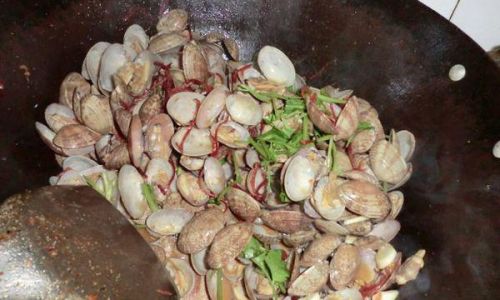
Selecting and Cleaning Razor Clams
The foundation of a great stir-fried razor clam dish begins with selecting the freshest possible shellfish. Look for clams with tightly closed shells, avoiding any that gape open or feel unusually heavy (a sign of spoilage). If purchasing live clams, store them in a breathable bag in the refrigerator and use them within a day. Frozen razor clams are a convenient alternative but require thorough thawing and draining to prevent excess moisture during cooking.
Cleaning razor clams is a critical step to eliminate sand and grit. Start by scrubbing the shells under cold running water to remove any debris. To purge the clams of internal sand, soak them in a bowl of salted water (1 tablespoon of salt per quart of water) for 2–3 hours. Some chefs swear by adding a few drops of oil to the water, as the oil coats the clams’ surfaces and encourages them to expel sand. After soaking, rinse the clams again and drain them thoroughly.
For those using pre-shucked razor clams (available in many Asian markets), a quick rinse under cold water will suffice. However, be mindful of any residual sand in the packaging and pat the clams dry with paper towels to prevent steaming during stir-frying.
Essential Ingredients and Flavor Pairings
The beauty of stir-fried razor clams lies in its simplicity—the dish relies on a harmonious blend of aromatics, spices, and sauces to elevate the natural flavor of the shellfish. Here’s a breakdown of the key ingredients:
- Aromatics: Fresh garlic, ginger, and scallions form the flavor base. Mince the garlic and ginger finely to release their oils during cooking, and slice the scallions into diagonal segments for texture.
- Spices: Dried chili flakes or fresh bird’s eye chilies add heat, while Sichuan peppercorns contribute a tingling numbness. Adjust the spice level to your preference.
- Sauces: A combination of soy sauce, oyster sauce, and a touch of Shaoxing wine (Chinese rice wine) creates depth. For a gluten-free alternative, use tamari or coconut aminos.
- Acid: A splash of rice vinegar or lime juice brightens the dish and balances the richness.
- Thickeners: A pinch of cornstarch dissolved in water helps the sauce cling to the clams without becoming gloopy.
- Oil: Use a neutral oil with a high smoke point, such as peanut or vegetable oil, for stir-frying.
Optional additions include fermented black beans, doubanjiang (spicy bean paste), or a sprinkle of toasted sesame seeds for garnish.

The Stir-Frying Process: Techniques and Tips
Stir-frying is a high-heat cooking method that requires precision and speed. To achieve the perfect texture, follow these steps:
- Preheat the Wok: Heat your wok or large skillet over high heat until it begins to smoke. Adding oil to a cold wok will result in a greasy dish.
- Sear the Aromatics: Swirl in the oil, then add the garlic, ginger, and chilies. Stir-fry for 10–15 seconds until fragrant but not browned.
- Add the Razor Clams: Toss the clams into the wok and stir-fry for 1–2 minutes. The high heat will sear the clams, locking in their juices.
- Deglaze with Sauce: Pour in the soy sauce, oyster sauce, Shaoxing wine, and a splash of water. Scrape the bottom of the wok to loosen any browned bits (these are called fond and add flavor).
- Cover and Steam: Reduce the heat to medium, cover the wok, and let the clams steam for 2–3 minutes. This step ensures even cooking and tenderizes the flesh.
- Thicken the Sauce: Remove the lid, increase the heat, and stir in the cornstarch slurry. Toss the clams until the sauce coats them glossily.
- Finish with Aromatics: Add the scallions and a drizzle of sesame oil. Toss once more and serve immediately.
Mastering the Sauce: Balancing Flavors
The sauce is the soul of stir-fried razor clams. Achieving balance requires understanding the interplay of salty, sweet, spicy, and umami elements. Start with a ratio of 2 parts soy sauce to 1 part oyster sauce, then adjust with a pinch of sugar to round out the flavors. For a richer sauce, add a teaspoon of hoisin sauce or a knob of butter.
If the sauce tastes flat, a splash of vinegar or lime juice can add vibrancy. Conversely, if it’s too acidic, a touch of honey or mirin will mellow it out. Taste and adjust seasonings as you cook—this is where intuition meets technique.
Common Mistakes to Avoid
- Overcooking the Clams: Razor clams cook rapidly. Overcooking will result in a rubbery texture. Remove them from the heat as soon as the shells open (if using live clams) or the flesh turns opaque.
- Using Too Much Oil: Excess oil will make the dish greasy. Use just enough to coat the wok and prevent sticking.
- Skipping the Steaming Step: Steaming ensures even cooking and tenderizes the clams. Skipping it may leave some parts undercooked.
- Adding Sauce Too Early: Adding sauces at the beginning can burn them before the clams cook. Deglaze with liquids after searing the aromatics.
- Crowding the Wok: Overcrowding lowers the wok’s temperature, leading to steaming instead of searing. Cook in batches if necessary.
Serving Suggestions and Pairings
Stir-fried razor clams are incredibly versatile. Serve them as:
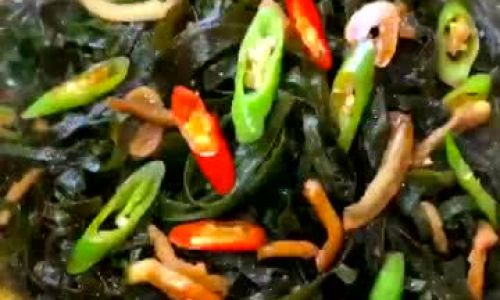
- An Appetizer: Pair with crispy spring rolls or dumplings for a multi-course meal.
- A Main Dish: Toss with udon noodles or serve over steamed jasmine rice.
- A Bar Snack: Enjoy with an ice-cold beer or a crisp white wine like Riesling.
For a complete meal, garnish with chopped cilantro, toasted sesame seeds, or a sprinkle of crushed peanuts. A side of stir-fried bok choy or garlic spinach adds freshness and color.
Health Benefits and Nutritional Value
Beyond their culinary appeal, razor clams offer notable health benefits. A 3-ounce serving provides:
- 20 grams of protein: Essential for muscle repair and satiety.
- 5 grams of fat: Predominantly healthy unsaturated fats.
- Rich in iron and vitamin B12: Crucial for energy production and red blood cell formation.
- Low in calories: Approximately 120 calories per serving, making them ideal for weight-conscious diets.
However, razor clams are high in cholesterol, so those with dietary restrictions should consume them in moderation.
Variations and Regional Twists
Chinese cuisine’s diversity shines through in regional variations of stir-fried razor clams:
- Sichuan Style: Amplify the heat with doubanjiang, Sichuan peppercorns, and dried chilies. Serve with a side of steamed buns to soak up the sauce.
- Cantonese Style: Keep it light with ginger, scallions, and a drizzle of sesame oil. Garnish with fried garlic chips for crunch.
- Taiwanese Night Market Style: Add basil leaves, Thai chilies, and a splash of fish sauce for a fragrant, herbaceous twist.
- Korean-Inspired: Incorporate gochujang (fermented chili paste), kimchi, and a sprinkle of toasted sesame seeds.
Preserving Leftovers
While stir-fried razor clams are best enjoyed fresh, leftovers can be stored in an airtight container in the refrigerator for up to 2 days. Reheat gently in a wok over medium heat, adding a splash of water or stock to prevent drying out. Avoid freezing, as this will alter the texture of the clams.
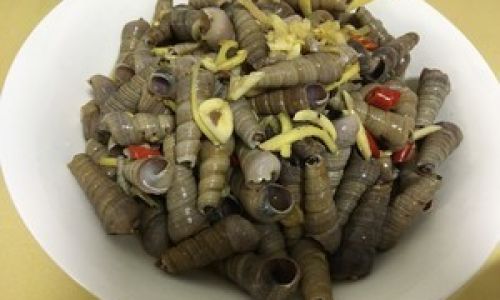
Conclusion
Stir-fried razor clams are a testament to the magic of simplicity in Chinese cooking. By mastering the basics of ingredient selection, cleaning, and stir-frying techniques, you can recreate this restaurant favorite in your own kitchen. Whether you prefer a fiery Sichuan rendition or a delicate Cantonese preparation, the key lies in balancing flavors, respecting the ingredient’s natural qualities, and cooking with confidence. So grab your wok, sharpen your knives, and embark on a culinary adventure that bridges tradition and innovation—one that will leave your guests asking for seconds.




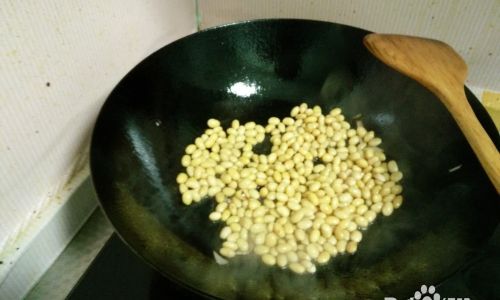
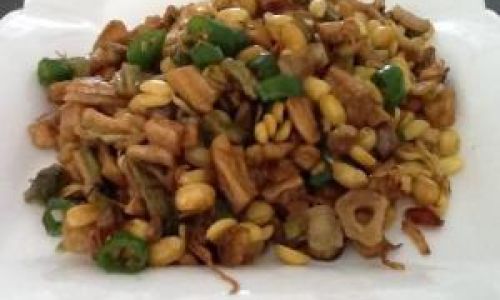
0 comments